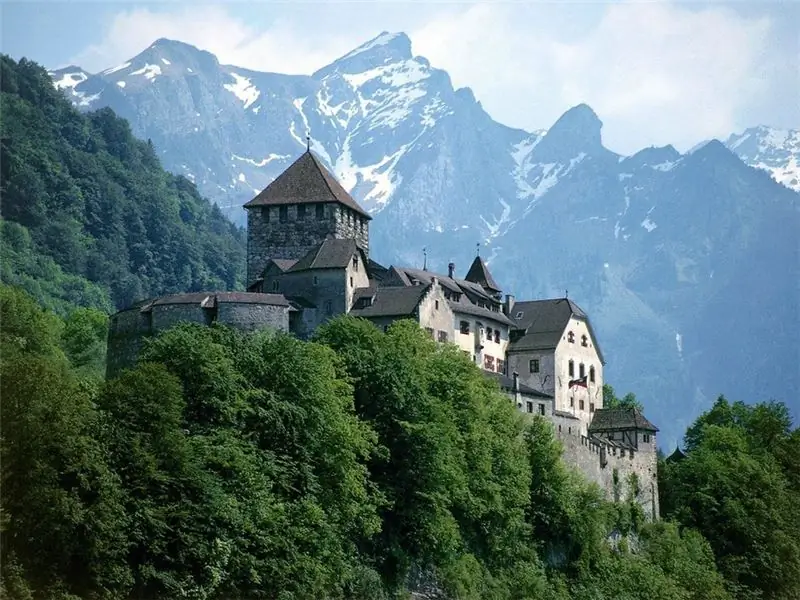
Where Liechtenstein is located - every tourist who plans to ski here in November-April wants to know (local tracks are mostly black and red). The peak tourist season in Liechtenstein falls in May-August (in June it is worth coming here to take part in the celebrations of the Open Film Festival, Guitar Day, Firefighters Music Festival).
Liechtenstein: where is this dwarf state located?
Liechtenstein is located in Western Europe. Liechtenstein, with its capital in Vaduz, has an area of 160 sq. Km. It is bordered by Switzerland on the west and Austria on the east.
The state “lurked” in the spurs of the Alps, and its highest point is the 2600-meter Graushpitz mountain. In the west of Liechtenstein, the Rhine flows. A quarter of Liechtenstein's territory is occupied by forests with oaks, spruces, beeches and other trees growing there, and the mountains are covered with alpine and subalpine meadows.
Liechtenstein consists of two administrative parts - Unterland (center - Schellenberg) and Oberland (center - Vaduz); 11 communities (Reggell, Eschen, Balzers, Mauren, Shan, Planken, Gamprin and others).
How to get to Liechtenstein?
To get to Liechtenstein from Moscow, you must first get to Zurich Airport, where Aeroflot delivers passengers in 3 hours, and Swiss Air in 3.5 hours (if you stop at the Belgrade airport, you will have to spend 5.5 hours on the road, Ljubljana - 5 hours, Podgorica - 11 hours, Palma de Mallorca - 9 hours, Frankfurt - 14 hours). Then Buks and Sargans can be reached by train in 1, 5-2 hours, from where suburban buses deliver everyone to Liechtenstein cities in a few minutes.
Holidays in Liechtenstein
In Liechtenstein, Vaduz deserves attention (it is famous thanks to the 15th century St. Anne Chapel, the Museum of Postage Stamps, the winery, the Cathedral of St. products, maps and photographs that acquaint tourists with the history of Liechtenstein), Malbun (the height difference in the ski area is 400 m; the resort has 18 well-equipped slopes, over 20 km long, 7 lifts and cross-country skiing tracks, 37 km long), Schaan (famous for the Church of St. Peter, the foundation of which was laid in the 15th century, the parish church of St. Lawrence, the chapel of St. Mary the Comforter; every year Schaan becomes the venue for carnivals; tourists flock here to see the performances that Theater am Kirchplatz "gives"), Triesenberg (the domed church and exhibits of the museum of the Walser ethnic commune are subject to inspection; and visit - the highest mountain vineyard in the country), Balzers (tourists are invited to see the chapel of the Virgin Mary, the ruins of the Church of St. Nicholas and the Gutenberg castle of the 11-12 centuries, the location of which is a 70-meter hill, and climbing to its top will be able to admire dense forests and pastoral meadows; on ordinary days, the castle is closed to tourists (with the exception of the lower courtyard with a sculpture of a horse located there), but often it becomes the center of attraction for visitors invited to various entertainment and cultural events).
Souvenirs from Liechtenstein
You should not return from Liechtenstein without purchasing postage stamps issued in the principality, wine, chocolate (the popular Furstenhutchen brand), porcelain and earthenware, local textiles, wooden cuckoo clocks, music boxes, bells, cow figurines.






